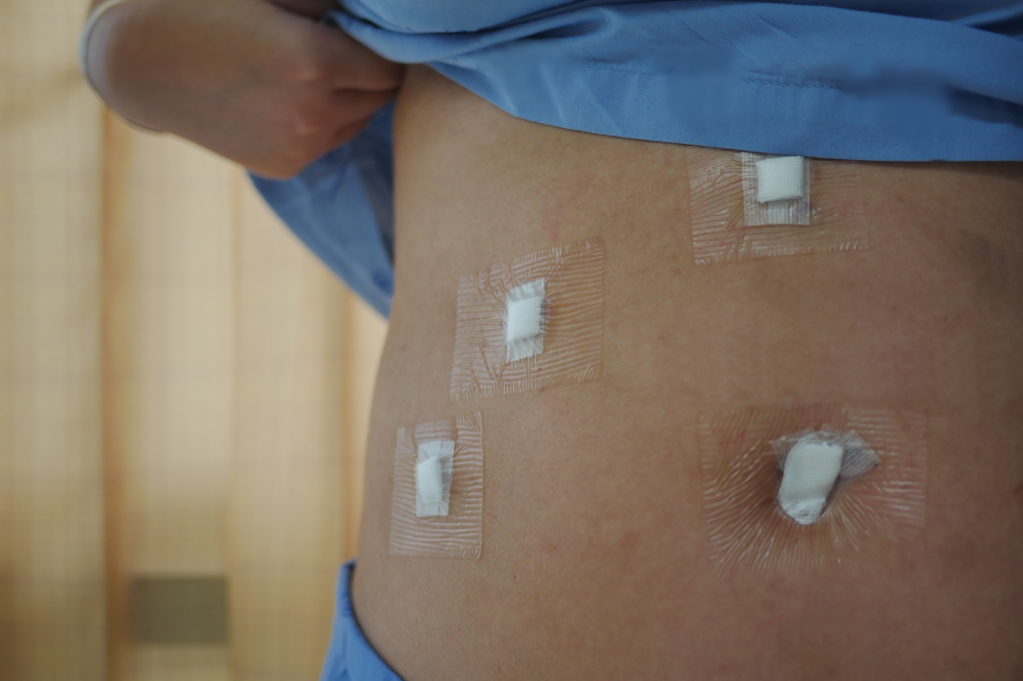MBBS, DNB (Surgery), MRCS (Edinburgh) FIAS, FIAGES, FALS
General | Minimal access |Bariatric | Laser Surgery
Cholecystectomy (gallbladder removal)
A cholecystectomy (koh-luh-sis-TEK-tuh-me) is a surgical procedure to remove your gallbladder — a pear-shaped organ that sits just below your liver on the upper right side of your abdomen. Your gallbladder collects and stores bile — a digestive fluid produced in your liver.
A cholecystectomy is a common surgery, and it carries only a small risk of complications. In most cases, you can go home the same day of your cholecystectomy.
A cholecystectomy is most commonly performed by inserting a tiny video camera and special surgical tools through four small incisions to see inside your abdomen and remove the gallbladder. Doctors call this a laparoscopic cholecystectomy.
In some cases, one large incision may be used to remove the gallbladder. This is called an open cholecystectomy.

FAQ
A cholecystectomy carries a small risk of complications including:
- Bile leak
- Bleeding
- Infection
- Injury to nearby structures, such as the bile duct, liver and small intestine
- Risks of general anesthesia, such as blood clots and pneumonia
Your risk of complications depends on your overall health and the reason for your cholecystectomy.
Risks
Possible complications of video-assisted thoracoscopic surgery include:
- Pneumonia, a lung infection
- Bleeding
- Temporary or permanent nerve damage
- Damage to organs near the procedure site
- Anesthesia-related effects
VATS can be a good option for people who are not good candidates for open surgery due to health concerns. However, VATS may not be appropriate for people who have had chest surgery previously. Talk with your doctor about these and other risks of VATS.
Food and medications
To prepare for a cholecystectomy, your surgeon may ask you to:
- Eat nothing the night before your surgery. You may drink a sip of water with your medications, but avoid eating and drinking at least four hours before your surgery.
- Stop taking certain medications and supplements. Tell your doctor about all the medications and supplements you take. Continue taking most medications as prescribed. Your doctor may ask you to stop taking certain medications and supplements because they may increase your risk of bleeding.
Clothing and personal items
Most people go home the same day of their cholecystectomy, but complications can occur that require one or more nights in the hospital. Plan ahead in case you need to stay in the hospital by bringing personal items, such as your toothbrush, comfortable clothing, and books or magazines to pass the time.
Other precautions
Find someone to drive you home and stay with you. Ask a friend or family member to drive you home and stay close the first night after surgery.
Before the procedure
A cholecystectomy is performed using general anesthesia, so you won’t be aware during the procedure. Anesthesia drugs are given through a vein in your arm. Once the drugs take effect, your health care team will insert a tube down your throat to help you breathe. Your surgeon then performs the cholecystectomy using either a laparoscopic or open procedure.
During the procedure
Depending on your situation, your surgeon will recommend one of two surgical approaches:
Minimally invasive (laparoscopic) cholecystectomy
During a laparoscopic cholecystectomy, the surgeon makes four small incisions in your abdomen. A tube with a tiny video camera is inserted into your abdomen through one of the incisions. Your surgeon watches a video monitor in the operating room while using surgical tools inserted through the other incisions in your abdomen to remove your gallbladder.
Next you may undergo an imaging test, such as an X-ray or ultrasound, if your surgeon is concerned about possible gallstones or other problems in your bile duct. Then your incisions are sutured, and you’re taken to a recovery area. A laparoscopic cholecystectomy takes one or two hours.
A laparoscopic cholecystectomy isn’t appropriate for everyone. In some cases your surgeon may begin with a laparoscopic approach and find it necessary to make a larger incision because of scar tissue from previous operations or complications.
Traditional (open) cholecystectomy
During an open cholecystectomy, the surgeon makes a 6-inch (15-centimeter) incision in your abdomen below your ribs on your right side. The muscle and tissue are pulled back to reveal your liver and gallbladder. Your surgeon then removes the gallbladder.
The incision is sutured, and you’re taken to a recovery area. An open cholecystectomy takes one or two hours.
After the procedure
You’ll be taken to a recovery area as the anesthesia drugs wear off. Then you’ll be taken to a hospital room to continue recovery. Recovery varies depending on your procedure:
- Laparoscopic cholecystectomy. People are often able to go home the same day as their surgery, though sometimes a one-night stay in the hospital is needed. In general, you can expect to go home once you’re able to eat and drink without pain and are able to walk unaided. It takes about a week to fully recover.
- Open cholecystectomy. Expect to spend two or three days in the hospital recovering. Once at home, it may take four to six weeks to fully recover
A cholecystectomy can relieve the pain and discomfort of gallstones. Conservative treatments, such as dietary modifications, usually can’t stop gallstones from recurring. In most cases, a cholecystectomy will prevent gallstones from coming back.
Most people won’t experience digestive problems after a cholecystectomy. Your gallbladder isn’t essential to healthy digestion. Some people may experience occasional loose stool after the procedure, which generally resolves over time. Discuss with your doctor any changes in your bowel habits or new symptoms following your procedure.
How quickly you can return to normal activities after a cholecystectomy depends on which procedure your surgeon uses and your overall health. People undergoing a laparoscopic cholecystectomy may be able to go back to work in a matter of days. Those undergoing an open cholecystectomy may need a week or more to recover enough to return to work.